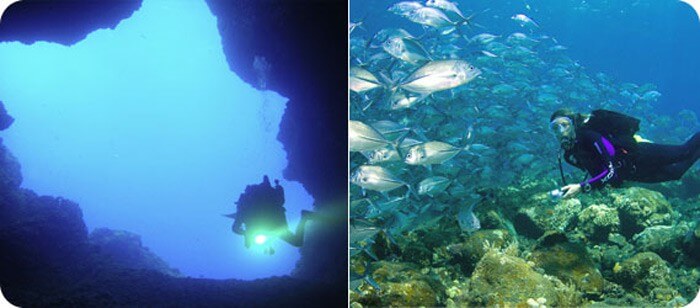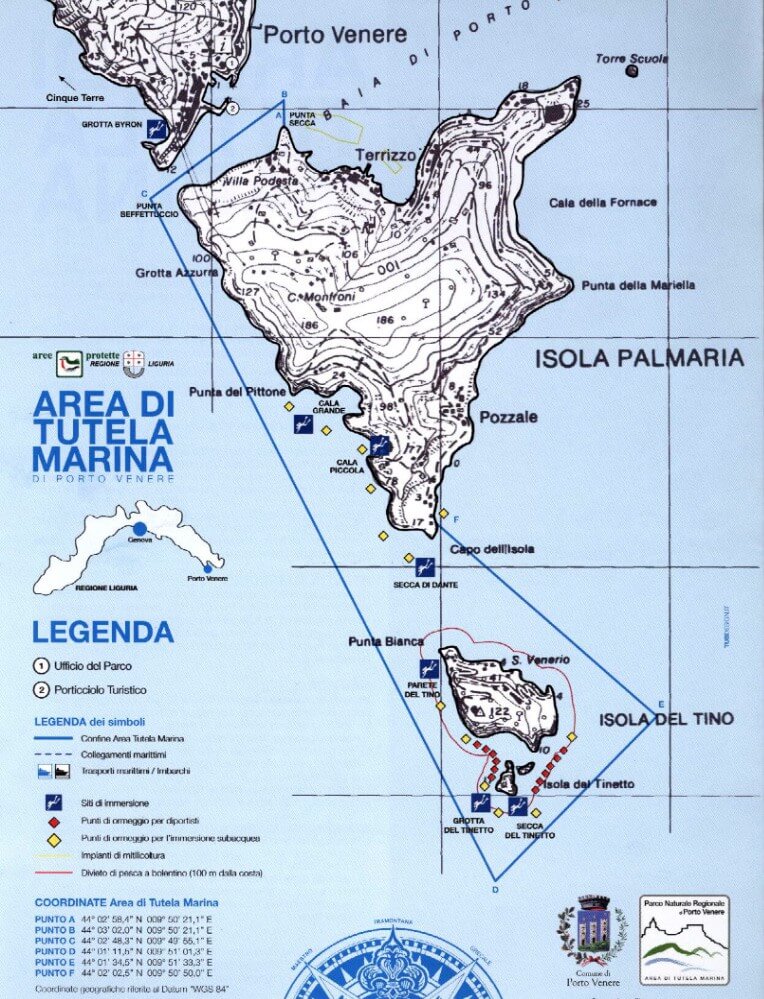The Regional Nature Park of Portovenere features a Protected Marine Area that includes the southwestern side of Palmaria Island, the small islands of Tino and Tinetto, and the Posidonia seabed in the “Bocche” channel that separates the largest island from the mainland.

Underwater paradise
Sheer rocky cliffs, shoals and caves characterize the area, offering divers the possibility of exploring a brightly colored world. Among the protagonists are many species of gorgonians, similar to soft corals.

There are many protected species among seaweed, sponges, mollusks, crustaceans and fish. The bed of Posidonia Oceanica in the channel offers food and shelter to a great quantity of marine organisms and fish like the green wrasse (Labrus viridis), the greater pipefish (Syngnathus acus), the long-snouted seahorse (Hippocampus ramulosus) and the annular seabream (Diplodus annularis). Other species that live in the Protected Marine Area of Portovenere include the barrel-shaped salps, sea urchins, shellfish, starfish and bogues.
Apart from the Posidonia oceanica, the flora features mainly the seaweed known as sea grapes (Caulerpa racemosa) and the seagrass known as little Neptune grass (Cymodocea nodosa).
The Caves
Divers from around the world visit the Protected Marine Area of Portovenere to explore its beautiful underwater caves, where the flora and fauna live placidly among colors that change throughout the day. If diving is not your cup of tea, you can still admire many grottos and their chromatic shows from a small boat.

Certainly not to be missed are Grotta del Tinetto and Grotta del Tino on the namesake islands, and Grotta Azzurra on Palmaria Island. The famous Byron’s Cave in Porto Venere does not fall under the marine reserve, however its seabed is full of life and visited by many divers.
Other scuba diving spots within the Protected Marine Area of Portovenere are Cala Grande, Cala Piccola and Secca di Dante (Isola Palmaria), Parete del Tino and Secca del Tinetto.
Protected Marine Area of Portovenere & the Regional Nature Park: video
Discover more from Discover Portovenere Blog
Subscribe to get the latest posts sent to your email.
1 Comment